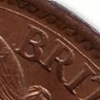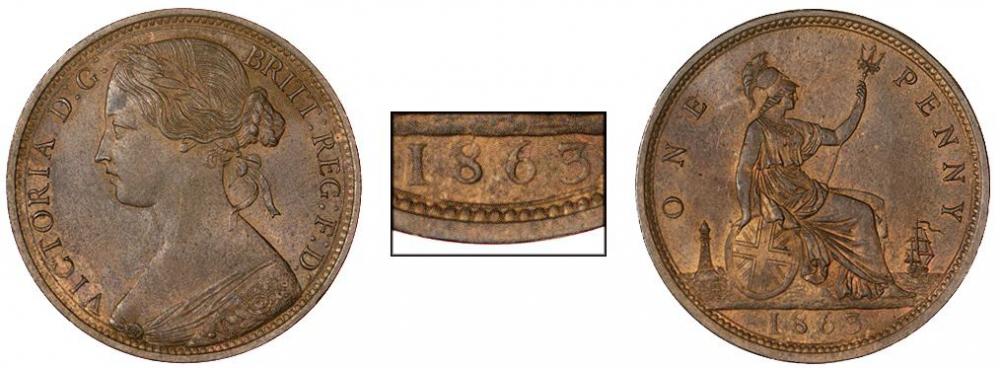|
|
The current range of books. Click the image above to see them on Amazon (printed and Kindle format). More info on coinpublications.com |
|
|
-
Content Count
2,540 -
Joined
-
Last visited
-
Days Won
162
Posts posted by secret santa
-
-
Fancy finding 2 rare English pennies in Bulgaria !!!
-
-
I have now added this coin to my website - I hope this is OK with you Voynov ?
-
 1
1
-
-
11 hours ago, 1949threepence said:Had me slightly flummoxed for a minute, as the second and third figures in, bear an uncanny resemblance toi Edward VII and George V.
That's because they are !
-
 2
2
-
-
4 hours ago, davidrj said:The baby is EDVIII
Many thanks for the responses to this.
-
Thanks Rob - who's the baby ? (BM = British Museum ?) Was it issued in 1897 ?
-
-
1877 pennies exist in a variety of widths. It's pity that you can't count the teeth on your examples. Gouby's Victoria penny book shows good examples.
Here's a wide one.
-
3 hours ago, 1949threepence said:Hmmm, possibly.
Well, he did say Freeman 8 closer ribbons above.
-
2 hours ago, 1949threepence said:With regard to 1874, do you mean Freeman's 69 and 76, reverse I?
I think he means the F77 and 78 varieties with obverse 8. They are both rare in high grades.
-
36 minutes ago, Guest Tim said:The other coins I have not seen in UNC condition are the 1874 G obverses
Tim, do you mean G reverses, or a different obverse ?
-
3 minutes ago, terrysoldpennies said:Just seen this on Ebay, He's showing a genuine known
 1933, pic
1933, pic
https://www.ebay.co.uk/itm/Rare-1933-penny/202093087478?hash=item2f0dafcaf6:g:3IQAAOSw8UZZ8SVx
This is the penny that was sold by Heritage last year for £150K - this guy needs reporting !!!
-
Our friend Lukasz has put an E over P on Ebay but it's a beaded border penny, i.e. unrecorded. Do I smell a rat or is this an exciting new find ?
-
First of all, the coins are poorly presented, apparently in random order. I checked the pennies and they don't seem to be in any sequence, e.g. date, which makes checking them tiresome. Secondly, they have a bog standard F10 covered in verdigris at £200 - totally unrealistic. Frankly, I'm surprised and disappointed.
-
-
Here's a photo of an obverse 7 with that colon dot missing. Maybe they added it back in later and there may be obverse 7 coins with a mis-aligned colon ?
-
23 minutes ago, PWA 1967 said:Lot 113
Sadly there's no photo in their archive.
-
6 hours ago, PWA 1967 said:Although i have never seen one described as Proof in any collection apart from the Robert Gray -Thompson one DNW 10th DEC 2009
Do you what lot number this was Pete ?
-
-
Can someone please tell me how to produce this overlaid picture ? I can flip the reverse photo in Paint but don't know how to superimpose a rotated picture onto the obverse.
-
3 hours ago, secret santa said:This particular clash on Victoria's neck occurs quite often on coins from the 1860's and 70's and has been referred to as a "crow's foot". If you search the posts for this you will see several mentions and examples. I have one on an 1877 penny. As Rob says, almost certainly caused by the folds on Britannia's dress.
Pete sent me the following picture which nicely illustrates the source of the "crow's foot". It's interesting that, although the crow's foot is always in the same place, it's caused by a clash with another coin's reverse at an angle of around 30 degrees whereas I would have expected the reverse to be vertical.
-
 1
1
-
-
26 minutes ago, Rob said:It looks like clashed dies given it has the same folds as the dress. Someone might pay extra for it, but there's no logical reason to do so
This particular clash on Victoria's neck occurs quite often on coins from the 1860's and 70's and has been referred to as a "crow's foot". If you search the posts for this you will see several mentions and examples. I have one on an 1877 penny. As Rob says, almost certainly caused by the folds on Britannia's dress.
-
20 hours ago, RLC35 said:That looks like Michael Gouby's example.
I actually bought it from Michael Gouby 14 years ago.
-
The trouble with early bronze coins is that date width differences occur so often that they are too numerous to catalogue and, because the final date numeral was often hand punched onto "blank" dies, the actual die variety does not differ between coins of a particular year and therefore does not, arguably, constitute different coin varieties. Michael Freeman didn't record date width differences within a given die type (with different Freeman numbers) but Michael Gouby did allocate different identifiers for a few "select" years with date width variations in his first book "The British Bronze Penny", e.g. 1889 narrow date, but then went on to record further variations in his follow up book "The British Bronze Penny 1860 to 1901". Collectors often collect these different date width variations but shouldn't really expect them all to be given different reference identities.
But arguments as to what constitutes a "variety" will continue ad infinitum.
 Coinpublications.com
Coinpublications.com




More Pennies
in British Coin Related Discussions & Enquiries
Posted
Could well be.